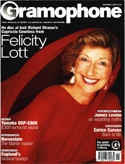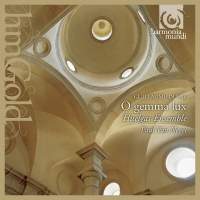Texte paru dans: / Appeared in: |
|
|
Outil de traduction (Très approximatif) |
|
|
Reviewer: David Fallows A marvellous repertory, beautifully organised and prepared with first-rate singers, but undermined 'by performances that too often ignore the changing texrures.
Dufay 's isorhythmic motets are among his most intriguing and out going works. They bristle with musical complexities and astonishing invention; they can mostly be dated and therefore give a good account of his development from almost the beginning (c.l419) until the late 1440s; and they chronicle his most public face , works often intended for great occasions of state . Putting them together on a single CD for the first time is itself a marvellous idea; to put them in chronological order is even better, since it helps the listener to understand Dufay's changing styles.
Moreover, Paul van Nevel has plainly prepared the ground with tremendous care. My own copy of the standard edition is heavily annotated with corrections and emendations, and he has incorporated so many of them - down to details of editorial accidentals - that I would almost think e has been in my study. The one respect in which he departs from the chronological order of pieces in that edition also corresponds to my own (this time published) view on the matter. And he has an excellent group of singers, with a clear tone and good articulation, if not always ideal enunciation.
So this is an
important and ground-breaking account of one of medieval music's most exciting
repertories. And it seems curmudgeonly for me to say that I am lukewarm about
it, but there it is. There are essentially two problems here. First, van Nevel
shows little awareness of the varying textures that seem fundamental to Dufay's
genius; the instrumentation he uses for the lower voices repeatedly muddies
those textures, most disastrously when he introduces a booming 16-foot pitch for
what he perceives as the climactic moments. The use of instruments is itself a
disputed matter, but that is not the point: what is distressing here is the way
the instruments are used. Secondly, too many of the tempos are so fast as to
obscure the lines and the counterpoint. Van NeveI's strict adherence to the
proportional speeds of the music seems excellent: this, too, involves many
disputed matters , though his views here nearly always coincide with mine. Where
we differ is in the appropriate starting speed : the great flourishes of detail
that so often characterise the final sections of Dufay's motets lose their power
if they are allowed to dissolve into aural incomprehensibility, which is what
often happens here. |
|
|
|
|
|
Cliquez l'un ou l'autre
bouton pour découvrir bien d'autres critiques de CD |
|




